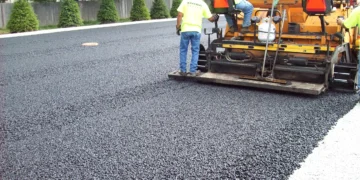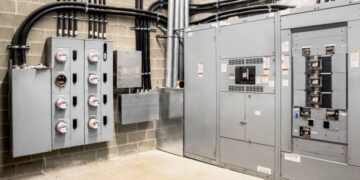Every morning and afternoon, school zones across the country become bustling hubs of activity. Children stream across streets on their way to and from school, often accompanied by parents, school staff, or crossing guards. Amidst this flurry of motion, school crossing signs play a vital role in ensuring the safety of children. Though these signs may seem simple at first glance, they are a cornerstone of pedestrian safety strategies that prevent accidents and save lives.
In this blog, we’ll explore how school crossing signs work, why they matter, and how communities can maximize their effectiveness.
The Purpose of School Crossing Signs
Warning Drivers of Pedestrian Activity
The most fundamental function of a school crossing sign is to alert drivers to the presence of children crossing the street. Unlike general pedestrian signage, these signs are specifically designed for school zones, using symbols, bright colors, and sometimes flashing lights to indicate times of high pedestrian traffic.
Prompting Speed Reduction
Most school crossing signs are installed in conjunction with reduced speed limits during school hours. By notifying drivers of the potential presence of children, who may not always act predictably, these signs encourage cautious and attentive driving.
Design and Placement: Why Details Matter
Standardized Visuals
In the United States, the Manual on Uniform Traffic Control Devices (MUTCD) provides guidelines for school zone signage. The school crossing sign is typically a fluorescent yellow-green pentagon-shaped sign featuring two walking figures. This distinct design ensures high visibility and instant recognition.
Strategic Positioning
These signs are not randomly placed. Traffic engineers conduct studies to determine where crossings are needed most—near entrances to schools, in mid-block areas without traffic lights, or at intersections with high pedestrian volumes. Proper placement ensures drivers have adequate time to see and respond to the sign.
Complementary Features
Often, school crossing signs are paired with additional safety elements:
- Flashing beacons that activate during school hours
- High-visibility crosswalks
- Speed feedback signs that show a driver’s speed in real-time
- Crossing guards during peak times
Together, these features create a holistic system to guide behavior and enhance safety.
Behavioral Impact: How Drivers Respond
Increasing Driver Awareness
Studies have shown that clearly visible school crossing signs significantly increase driver awareness. When drivers see a sign, they’re more likely to scan the environment for pedestrians, slow down, and yield appropriately.
Reducing Reaction Time
A well-placed school crossing sign gives drivers advance notice of potential hazards, reducing reaction time. In high-speed scenarios, even a one-second delay can mean the difference between a near miss and a tragic accident.
Curbing Risk-Taking Behavior
Research from the National Highway Traffic Safety Administration (NHTSA) suggests that drivers tend to be more cautious in areas with prominent school signage, especially when accompanied by active enforcement or visible children.
Children’s Safety and Learning
Establishing Safe Habits
School crossing signs also influence children’s habits. When kids see the same signs each day, they begin to associate those zones with safety and proper crossing procedures.
Educational Integration
Schools often incorporate pedestrian safety education into their curriculum. These lessons use real-world examples—like the school crossing sign—to teach students where and how to cross streets safely. By reinforcing these signs’ meanings, children become more proactive in their own safety.
Real-World Impact: Data on Effectiveness
Accident Reduction in School Zones
Numerous municipalities have reported measurable decreases in pedestrian accidents following the installation or upgrade of school crossing signs. For example:
- A study in New York City found a 44% reduction in child pedestrian crashes in areas where school crossing signs were combined with other safety improvements.
- In Chicago, school zones with enhanced signage and speed enforcement saw fewer incidents and increased compliance from drivers.
Improved Driver Compliance
According to the Insurance Institute of Highway Safety (IIHS), areas with modernized school crossing signs and flashing beacons witnessed a marked improvement in driver compliance. Up to 80% of drivers yielded to pedestrians, compared to just 30-40% in unmarked zones.
Challenges and Considerations
Sign Visibility and Maintenance
Over time, school crossing signs can become faded or obscured by vegetation. Regular inspections are critical to ensure they remain visible and legible.
Varying Local Standards
Not all jurisdictions follow the same standards for signage. This inconsistency can confuse drivers, especially those unfamiliar with local laws. Standardization helps reduce ambiguity.
Sign Fatigue
In areas with too many signs or ineffective placement, drivers may start to ignore signage altogether. To combat this, signage should be accompanied by active enforcement and be strategically placed based on traffic studies.
The Role of Technology
Smart Signage
Modern school crossing signs are increasingly incorporating smart technology. These signs can:
- Detect approaching vehicles and activate flashing lights
- Use radar to display the driver’s speed
- Connect to centralized systems for data collection and monitoring
Mobile Alerts
Some communities are piloting systems that send mobile notifications to drivers when they enter a school zone, adding an extra layer of warning.
Integration with Cameras
Automated enforcement cameras can be tied to signage to catch speeding or failing to yield in school zones, further reinforcing the importance of obeying these critical markers.
Community and Policy Involvement
Municipal Investments
Cities and towns that prioritize pedestrian safety often invest in enhanced school crossing sign systems, considering them a cost-effective way to protect children.
Parental and School Advocacy
Parents, school boards, and safety advocates play a vital role in pushing for improved signage. By reporting problems, participating in planning meetings, and collaborating with local officials, they can ensure that school zones receive the attention they need.
Volunteer Crossing Guards
In some communities, volunteer crossing guards partner with signage to form a human-and-symbol safety system. The presence of a guard reinforces the authority of the school crossing sign and provides additional assurance for young pedestrians.
A Small Sign with a Big Impact
The school crossing sign may be simple in design, but its impact on pedestrian safety, especially for children, is profound. By alerting drivers, guiding pedestrians, and contributing to a safer traffic ecosystem, these signs help prevent accidents and, ultimately, save lives.
Investing in improved signage, keeping signs well-maintained, educating the public, and integrating modern technology are all key steps toward maximizing their effectiveness. As communities continue to grow and traffic volumes increase, prioritizing the safety of our youngest pedestrians through clear, visible, and effective school crossing signs is not just a good idea—it’s a necessity.







































